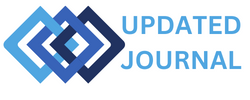Computer security is a complex subject, and it is important to understand the various elements that can impact the safety and security of your system. One such element is the threat actor, an individual or group that is capable of taking advantage of vulnerabilities in a computer system to gain access to information or cause damage. In this blog post, we will discuss what a threat actor is, how they operate, and the different types of threat actors that exist. We will also discuss the importance of computer security and how to protect yourself from potential threats.
Types of Threat Actors
When it comes to cyber threats, there are many different types of threat actors. These threat actors can be divided into four broad categories: Cyber Criminals, Hacktivists, Organized Crime, and Nation-State Actors. In this blog post, we will discuss each category in detail to give you a better understanding of each type of threat actor.
Cyber Criminals
Cyber criminals are individuals or groups who use technology to commit illegal activities for financial gain. Cyber criminals operate on the dark web and use sophisticated methods to exploit vulnerabilities in computer systems. They use malicious tactics such as phishing, malware, ransomware, and DDoS attacks to steal sensitive data and extort money from businesses and individuals alike.
Hacktivists
Hacktivists are individuals or groups who use technology to achieve a political or social agenda. They use methods such as distributed denial of service (DDoS) attacks, website defacements, and data breaches to disrupt or vandalize websites. Hacktivists usually target large organizations in order to spread their message and draw attention to their cause.
Organized Crime
Organized crime is a term used to describe any criminal activity undertaken by a large, structured group. Organized crime groups often use technology to facilitate their criminal activities, such as money laundering, identity theft, and drug trafficking. They are often highly sophisticated, organized, and well-funded, making them difficult to detect and combat.
Nation-State Actors
Finally, nation-state actors are individuals or groups that are sponsored, supported, or controlled by a nation-state. These actors use cyber-warfare tactics to disrupt, spy on, or disrupt the operations of other nations. Nation-state actors often have sophisticated tools and resources at their disposal, making them especially dangerous and difficult to combat.
Which specific threat actors violate computer security for personal gain
One of the most common threat actors are hackers. These individuals use a variety of techniques to gain unauthorized access to systems and networks, often with malicious intent. They may be looking to steal confidential information, launch large-scale distributed denial-of-service (DDoS) attacks, or even engage in identity theft.
Another type of threat actor is a cybercriminal. These individuals use malware, phishing, and other malicious techniques to steal information or extort money. Mobile malware, ransomware, and malicious websites are all examples of cybercriminal activities.
Criminals may also use the dark web to purchase and deploy malicious tools, such as malware and botnets, to carry out attacks. The dark web is a hidden network used by criminals to facilitate the buying and selling of illegal goods and services.
Organized crime is another form of threat actor. These groups are often highly organized and have the resources to launch sophisticated attacks. They may be looking to steal intellectual property or commit large-scale fraud.
Finally, nation-state actors pose a significant threat to computer security. They may use their considerable resources to launch cyber espionage campaigns, steal intellectual property, launch large-scale distributed denial-of-service (DDoS) attacks, or interfere with democratic processes.
Motivations for Violating Computer Security
Here are the four most common motivations for computer security violations:
Financial Gain
Financial gain is one of the most common motivations for computer security violations. Criminals have been exploiting computer systems for years in order to steal money or financial information. This type of crime is often referred to as cybercrime and can range from the creation of malware to phishing attacks in order to steal victims’ financial information. Other examples of cybercrime include ransomware attacks, in which criminals hold victims’ data hostage until a ransom is paid, and distributed denial-of-service (DDoS) attacks, in which criminals use large networks of computers to overwhelm servers with requests, effectively making them inaccessible.
Intellectual Property Theft
Intellectual property theft is another common motivation for computer security violations. This type of crime typically involves illegally accessing and/or stealing intellectual property, such as software source codes, trade secrets, or copyrighted material. Intellectual property theft can be extremely damaging to businesses, as it can lead to the loss of proprietary information that could be used to give a company a competitive edge.
Spreading Propaganda
Spreading propaganda is another common motivation for computer security violations. This type of crime involves using computers to spread false information in order to sway public opinion or to disrupt the operations of targeted organizations. For example, malicious actors have been known to spread false news stories, create fake social media accounts, and launch distributed denial-of-service (DDoS) attacks in order to spread their message or disrupt the operations of their target.
Political Agenda
Finally, political agenda is another common motivation for computer security violations. This type of crime typically involves governments or political organizations attempting to disrupt the operations of other countries or organizations. For example, governments have been known to launch cyberattacks against other countries in order to gain an advantage or to disrupt the operations of targeted organizations.
Examples of Threat Actors Violating Computer Security
Stuxnet
Stuxnet is a computer worm that was first discovered in 2010. It is believed to have been developed by the United States and Israel to target Iranian nuclear facilities. The primary goal of the attack was to sabotage the uranium enrichment process. To do this, Stuxnet exploited four zero-day vulnerabilities in Microsoft Windows to gain remote access to the infected system. Once inside, the worm was able to infect the PLCs (Programmable Logic Controllers) that controlled the uranium centrifuges, allowing it to slow down or even stop the enrichment process.
WannaCry
WannaCry is a ransomware campaign that first surfaced in 2017. It is believed to have been developed by the North Korean government, although this has never been confirmed. WannaCry was spread using a vulnerability in Microsoft Windows called EternalBlue, which allowed the attackers to gain access to the computers of anyone who had not updated their systems. Once inside, the ransomware encrypted the user’s files and demanded a ransom payment in order to decrypt them.
NotPetya
NotPetya is a ransomware campaign that first appeared in 2017. It is believed to have been developed by the Russian government, although this has never been confirmed. NotPetya was spread using a vulnerability in Microsoft Windows called EternalBlue, and like WannaCry, it encrypted the user’s files and demanded a ransom payment in order to decrypt them.
Carbanak
Carbanak is a sophisticated cyber-attack that first appeared in 2014. It is believed to have been developed by the Russian hacking group APT28. Carbanak targeted banks and other financial institutions, allowing the attackers to gain access to the networks and steal money from the banks’ accounts. To do this, the attackers exploited vulnerabilities in the banks’ systems, allowing them to gain access to the banks’ networks. They then used a variety of techniques, including social engineering and malware, to steal funds from the accounts.
These are just a few examples of threat actors that have violated computer security. Knowing the different types of attacks used by these threat actors is one way to help protect your systems and data. It is also important to keep your systems and software up to date to ensure that any vulnerabilities that may have been exploited by these attackers have been patched.
Prevention and Response Measures
One of the most important prevention measures is the application of security patches. Security patches address vulnerabilities in software and hardware, which can help protect against cyber-attacks. Organizations should prioritize the installation of the latest security updates and patches in order to minimize the risks of a successful attack.
In addition to security patches, organizations should provide awareness training to their employees. Employees should be aware of the latest cyber threats and how they can protect themselves and the company from them. This can include regularly reviewing security policies and procedures, as well as being aware of the most common attack vectors and methods used by threat actors.
Organizations should also deploy anti-virus software and firewalls in order to detect and prevent malicious activities. Anti-virus software scans for malicious software that has already been downloaded onto the system, while firewalls help to block malicious traffic. Both of these measures can help protect organization networks from cyber-attacks.
Finally, organizations should also consider using additional measures such as multi-factor authentication and intrusion detection systems. Multi-factor authentication helps to ensure that only authorized users can access sensitive data and systems, while intrusion detection systems monitor for suspicious activities that could indicate an attack.
Conclusion
It is clear that threat actors violate computer security for personal gain. This is a growing problem as the internet and technology become more pervasive in our lives, as it makes it easier for malicious actors to exploit weaknesses in computer systems. To protect against this threat, companies and individuals should stay aware of the latest security threats and make sure they are taking all necessary steps to protect their systems. Read more for these type of blogs.

